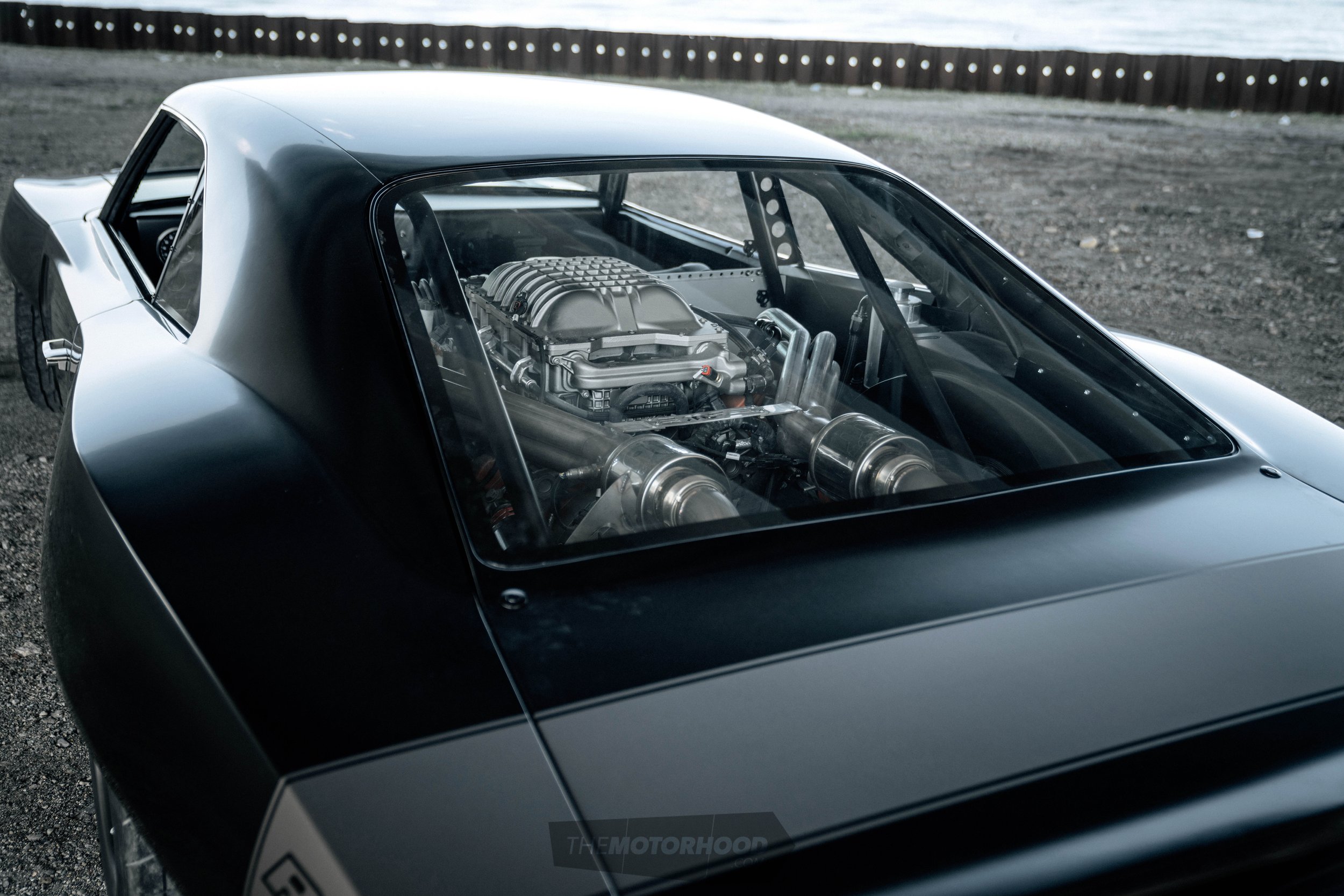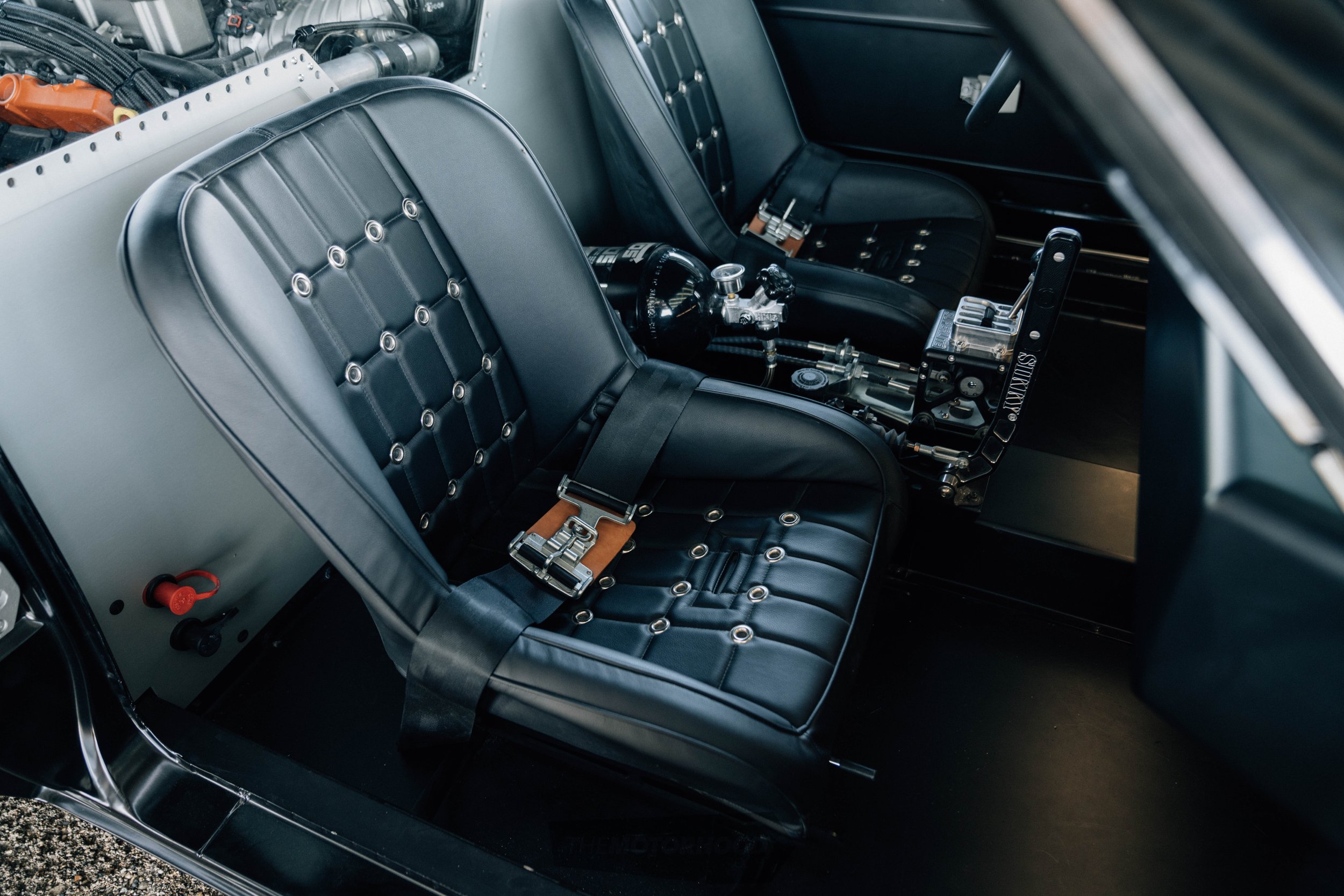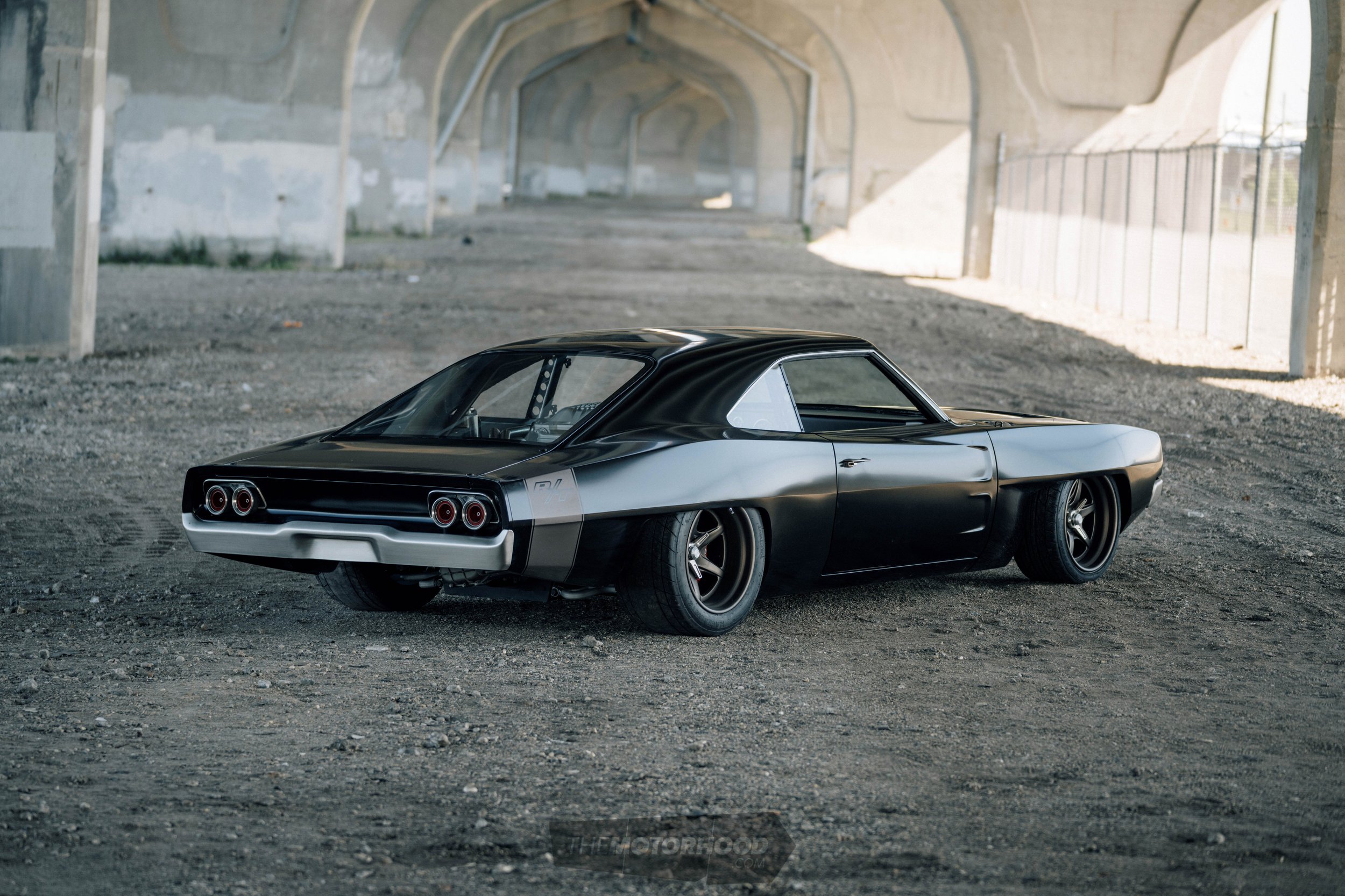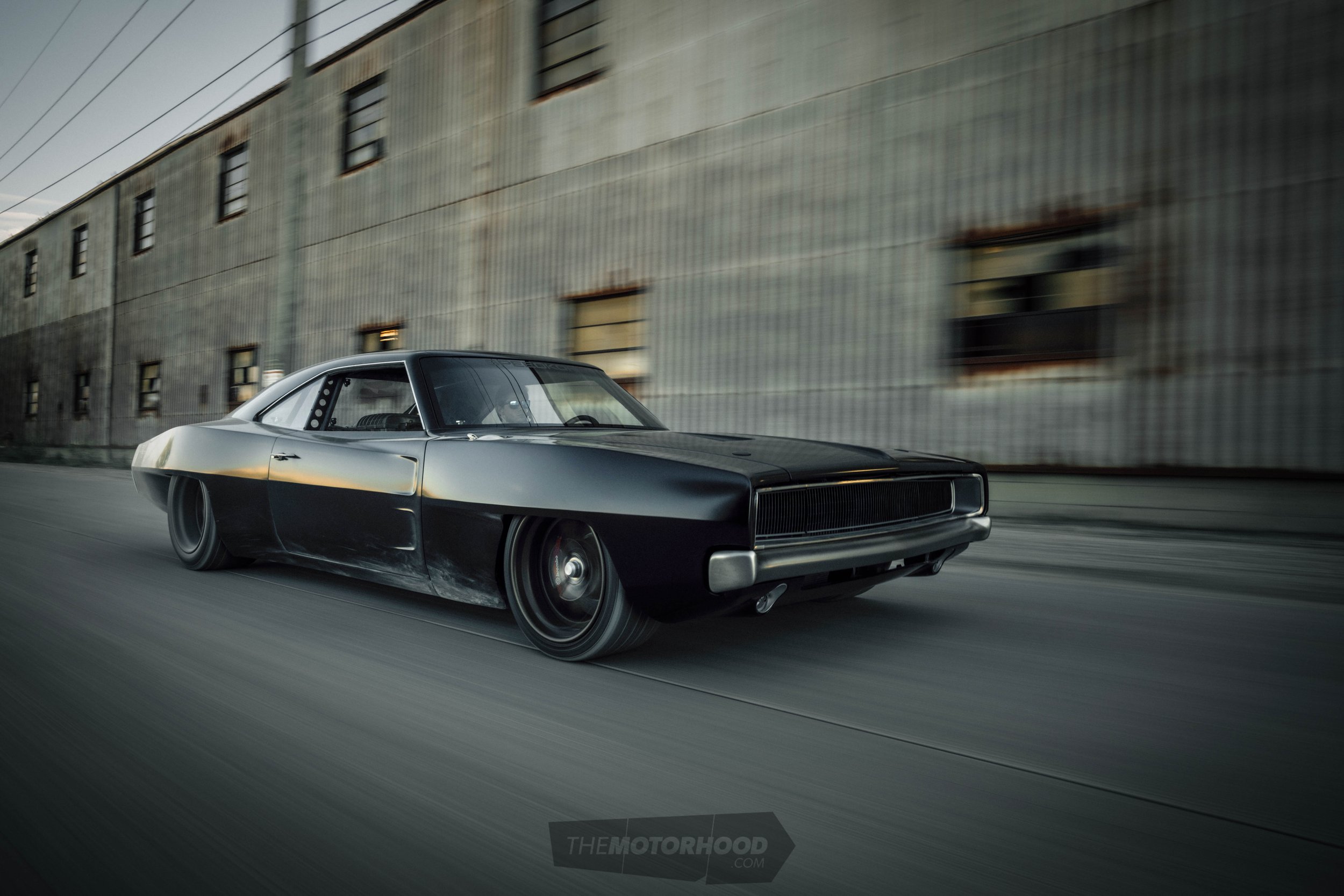There’s only so many ways to build a B-body Charger, right? SpeedKore throws that theory in the bin with this wild ’68 — carbon bodied and powered by a mid-engined Hellcat mill
Words: Connal Grace Photos: Speedkore



You can only lie to yourself so much, and even the most diehard Fast & Furious nerd has to admit that, at some point, the franchise has steadily steered away from the car scene as you or I know it and into the realms of fantasy. It’s Hollywood and that’s quite all right — loud noises and fiery explosions put bums on seats, and the hero cars have always been exciting and aspirational.
Through it all there’s been a base ensemble of character cars, and for F9 — the series’ latest — lead character Dominic ‘Dom’ Toretto’s iconic B-body Dodge Charger has undergone a transformation befitting the franchise’s box-office successes. Dom’s Charger affinity was introduced in 2001 with a supercharged ’69 Charger in The Fast and the Furious, and it’s now evolved to surpass the bounds of reality; well, it would have if this car didn’t exist in real life. It’s the sort of car you might have dreamed about if you were a child growing up in today’s world — it’s got to be a Dodge Charger, but it has to be mid-engined, it has to have a custom chassis, and the body has to be carbon fibre … and so on. It’s lunatic on paper and perfect in execution.
And it doesn’t end on paper, or the silver screen, because this is a real-deal, road-going version. This ’68 Charger, dubbed ‘Hellacious’, was built by high-spec car builder SpeedKore, whose work you may recognise in the form of ‘Tantrum’ — the bare-metal ’70 Charger built to commemorate that in Furious 7.


“This Charger is one of our most extreme builds to date,” says Jim Kacmarcik, president and owner of SpeedKore. “After commissioning renowned designer Sean Smith to design the car, and working with F9’s picture vehicle coordinator Dennis McCarthy to build the nine chassis and vehicle bodies for the film, we wanted to bring the movie magic of F9 to life. Hellacious is a road-going version of the movie car with the functionality of a purpose-built performance car.”
That’s why the spec list reads like something you’d expect to find comprising a world-class pro-touring build — because, for all intents and purposes, that’s exactly what it is, just dialled up so far that it barely computes.
Keeping it in the Mopar family is a supercharged 6.2-litre Hellcat Hemi good for 707hp, pumping its 650lb·ft through a gated manual Graziano transaxle out of a Lamborghini Gallardo. And it obviously isn’t an overload of grunt that’s gone into a floppy old B-body chassis either. This jaw-dropping mechanical package has been engineered to slot into a mid-mount position in a one-off SpeedKore perimeter chassis, with Detroit Speed A-arm front clip and RCR double-wishbone rear suspension, incorporating QA1 coilovers at each corner, and Detroit Speed rack-and-pinion steering.

Rather than butchering a steel ’68 Charger, the body is a full carbon-fibre SpeedKore special, much like the company’s previous Charger builds, but incorporates a full widebody kit styled by Sean Smith Designs. It’s not all exaggerated carbon-fibre swagger though: those brushed steel bumpers have been tucked into the bodywork but retain the stock lines, the vertical slat grille uses standard ’68 Charger hideaway headlights and is finished with metal brightwork, and the rear fascia incorporates quad tail-lights like a ’68 should, while the carbon body between either end has been smoothed with deleted gutters and flush-mount glass, including a glass rear hatch to properly show off the Hellcat plant.
Look a little closer at it and you’ll notice the sleek SpeedKore-designed MagnaFlow four-into-one long tube headers, which flow through a trick SpeedKore exhaust with MagnaFlow mufflers routed high in the chassis for transaxle clearance. The attention to packaging also covered rear-mounted intercoolers for the 2.4-litre supercharger, while a Saldana performance radiator is conventionally mounted at the front. ‘Conventional’ isn’t a word that can be used in regard to many of the details found on Hellacious, but the finishing touches are far more utilitarian than the eye-watering mechanical specs would suggest.


The carbon bodywork is coated in matte black paint, albeit in fancy BASF Glasurit, and the interior is a similar no-nonsense affair — low-back bucket seats with Simpson race harnesses, Classic Instruments gauges in a sheet aluminium dash, and an aluminium rear firewall and rear roll cage.
Look just a little closer though and you’ll see it hasn’t really been dressed down. The hydraulic handbrake isn’t there for show, and draws attention to the high-end Brembo brake package incorporating six-piston fronts and dual four-piston units at the rear — one pair for normal braking duties, and the other hooked up to the hydraulic handbrake. These sit quietly behind one of the more notable touches — custom HRE Hellacious centre-lock wheels, measuring in at 18×10.5 and 18×12.5 inches, and finished with 275/35R18 and 345/35R18 tyres.
With all that going on, it looks like Dom might still be rolling in a 10-second street car 20 years down the track. The more some things change, the more they stay the same, but with the incredible feat SpeedKore has achieved in reimagining a supercharged Charger for the street, it’s hard to imagine what could possibly come next. Guess we’ll just have to wait for Fast 10 to find out …

This article originally appeared in NZV8 issue No. 196




